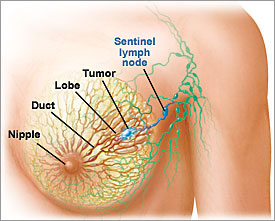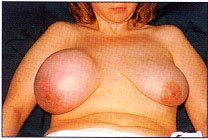October Is Breast Cancer Awareness Month
In the United States, women get breast cancer more than any other type of cancer except for skin cancer. Breast cancer also is second only to lung cancer as the leading cause of cancer-related mortality in women.
The National Breast Cancer Awareness Month program is dedicated to increasing public knowledge about the importance of early detection of breast cancer. The national education campaign reaches out to the general public; city, state and federal governments; health care professionals, employers, members of the news media and women of all ages and ethnic groups
 Each year in the United States, more than 210,000 women are diagnosed with breast cancer and 43,000 die from the disease.
Each year in the United States, more than 210,000 women are diagnosed with breast cancer and 43,000 die from the disease. The best way to reduce breast cancer mortality is through early detection by scheduling a mammogram, a clinical breast exam (CBE) and by regularly practicing breast self exams (BSE). A mammogram is an x-ray of the breast that may find tumors that are too small to feel. For women 40 and older, it is a critical part of a three-part early detection strategy. Breast cancer may also be discovered through CBE and BSE.

With these forms of early detection, a physician or the woman herself may discover a lump or mass in the breast. CBE and BSE can also detect other breast changes such as a thickening, swelling, dimpling, skin irritation, distortion, retraction, scaliness, pain, tenderness of the nipple or nipple discharge. If any of these symptoms of breast cancer are found, a physician should be consulted.

The risk increases with age, a personal or family history of breast cancer, beginning menstruation at an early age, beginning menopause at a late age, lengthy exposure to hormones such as estrogen or progesterone, never having children or having children at a late age.
Additional risk factors of breast cancer include treatment with radiation therapy to the breast or chest, alcohol consumption, obesity (especially with weight gain after menopause) and physical inactivity.

Since adult women may not be able to alter their personal risk factors in any practical sense, the best way for reducing mortality is through early detection. Remember, early detection is the best protection.
SOURCE: Dr. Kathleen Tajeu, Community Health Specialist, Alabama Cooperative Extension System (334) 844-2201


